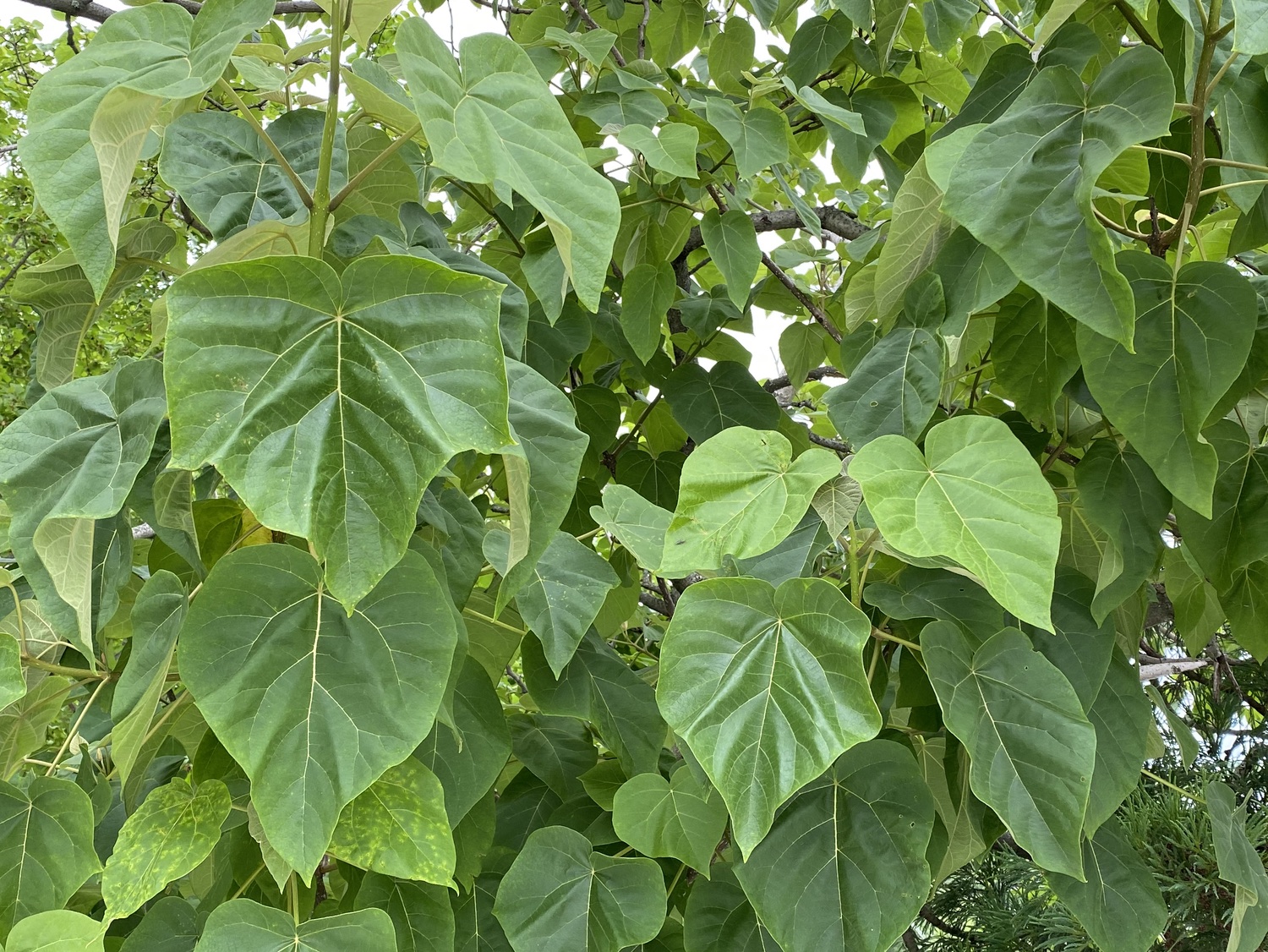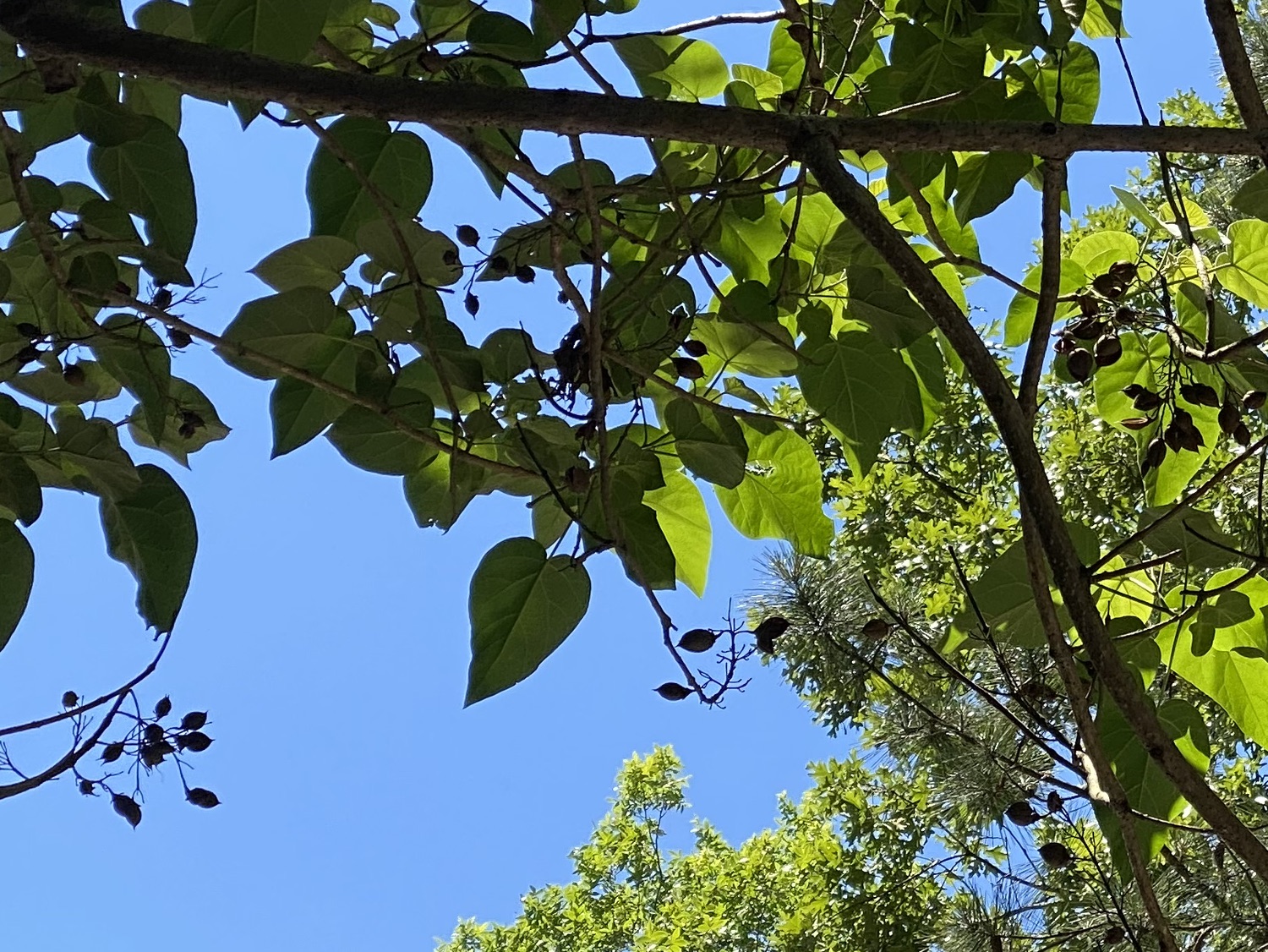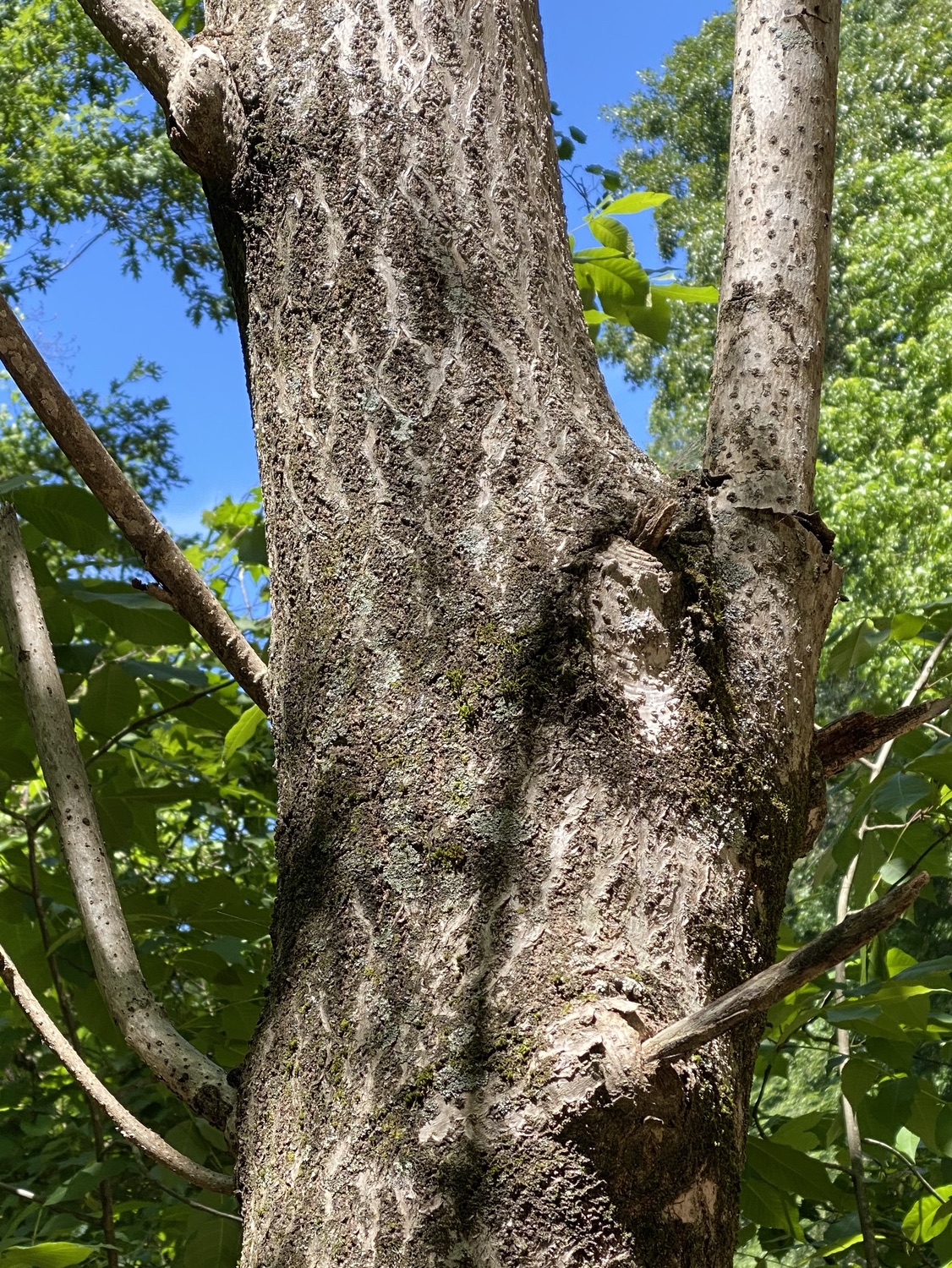TREES OF ATHENS: PALMATE LEAVES
5/25/20
The leaves of all of these trees have veins that radiate from the base of the leaf. In the Athens area, these include four maples (Red, Florida, Chalk, and Boxelder), the Sweetgum, American Sycamore, Tuliptree, Sassafras, Eastern Redbud, Southern Catalpa, and the non-native Royal Paulownia.
Red Maple (Acer rubrum). Unlike other maples, the leaves of the Red Maple have three strong forward-pointing lobes. In some trees, the leaves are rather small (2–3"), but much larger in others (4–5"); I’m not sure if these are different species, subspecies, or just normal intraspecific variation. The twigs are red, and the bark in younger trees is smooth with small warts.
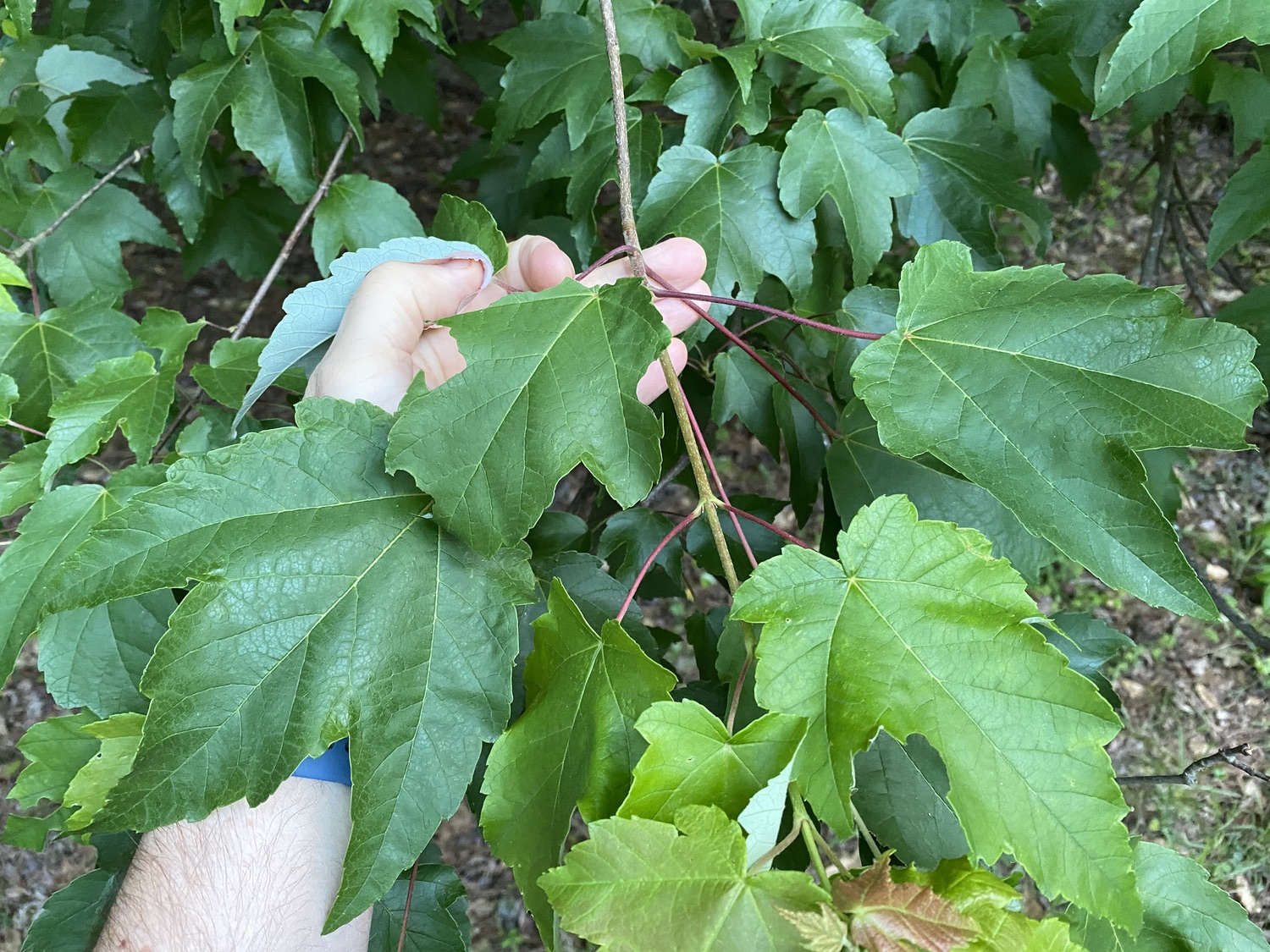
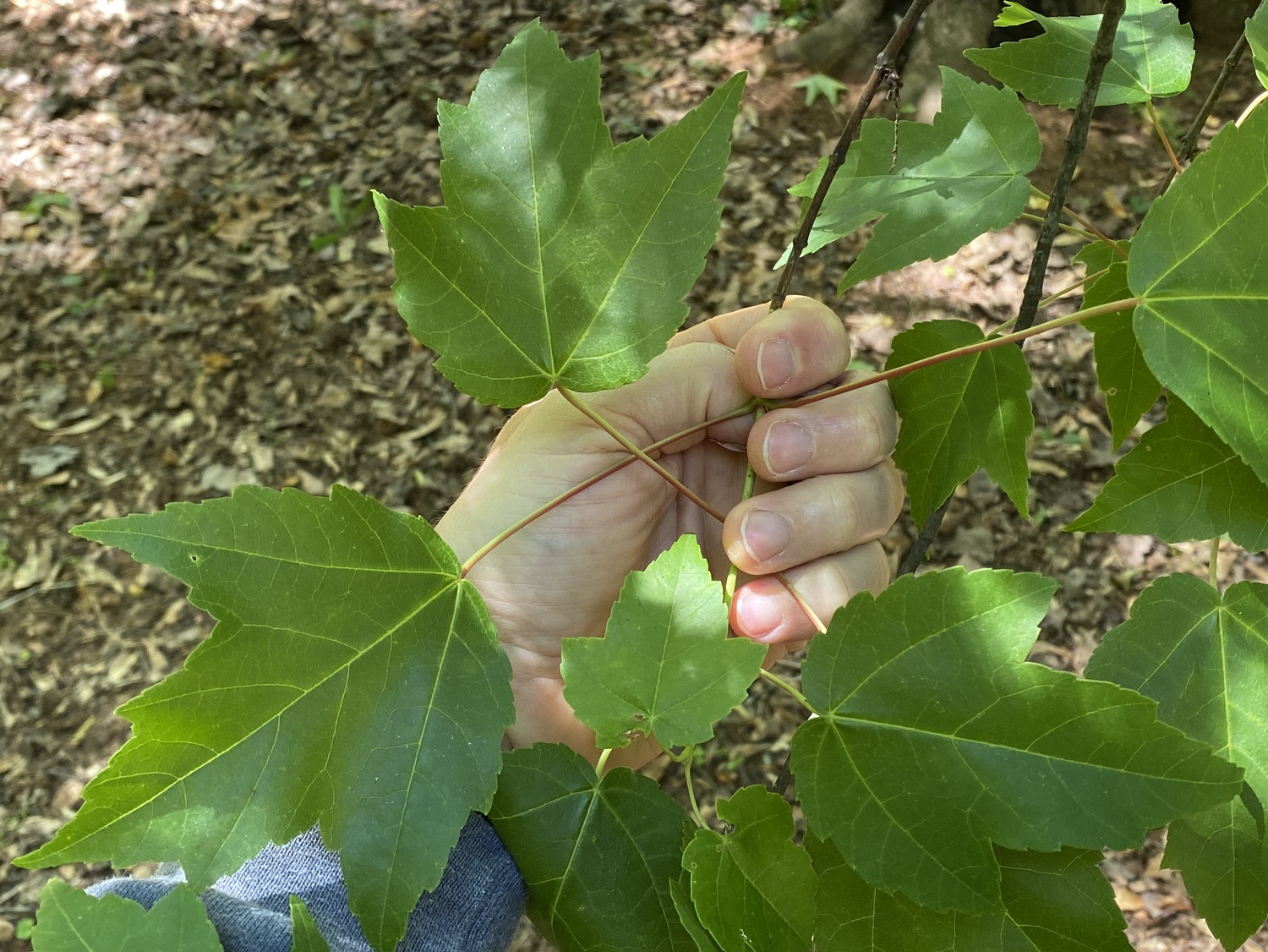
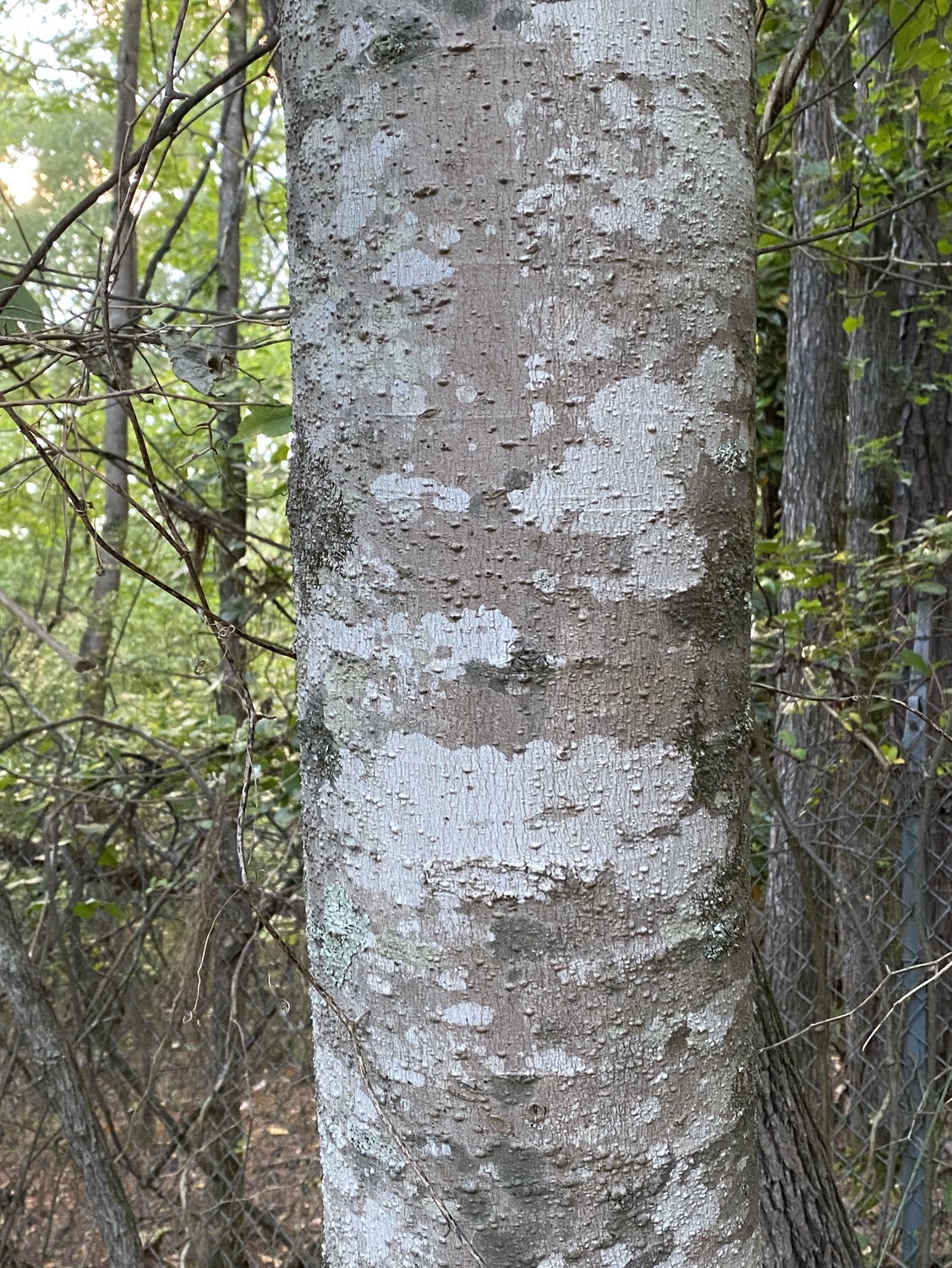
Florida Maple (Acer floridanum, until recently thought to be Acer barbatum, and also called Southern Sugar Maple). Leaves have a classic maple shape, with 3–5 lobes. The whitish undersides of the leaves distinguish the Florida Maple from the very similar Chalk Maple. Some guides suggest using whether the terminal lobe tapers or widens from its base, but this is unreliable: all of the leaves below are from the tip of a single branch. Bark is furrowed.
The Florida Maple is much more common along the North Oconee River than it is in the dryer upland areas, with their Hickory-Oak-Pine forests.
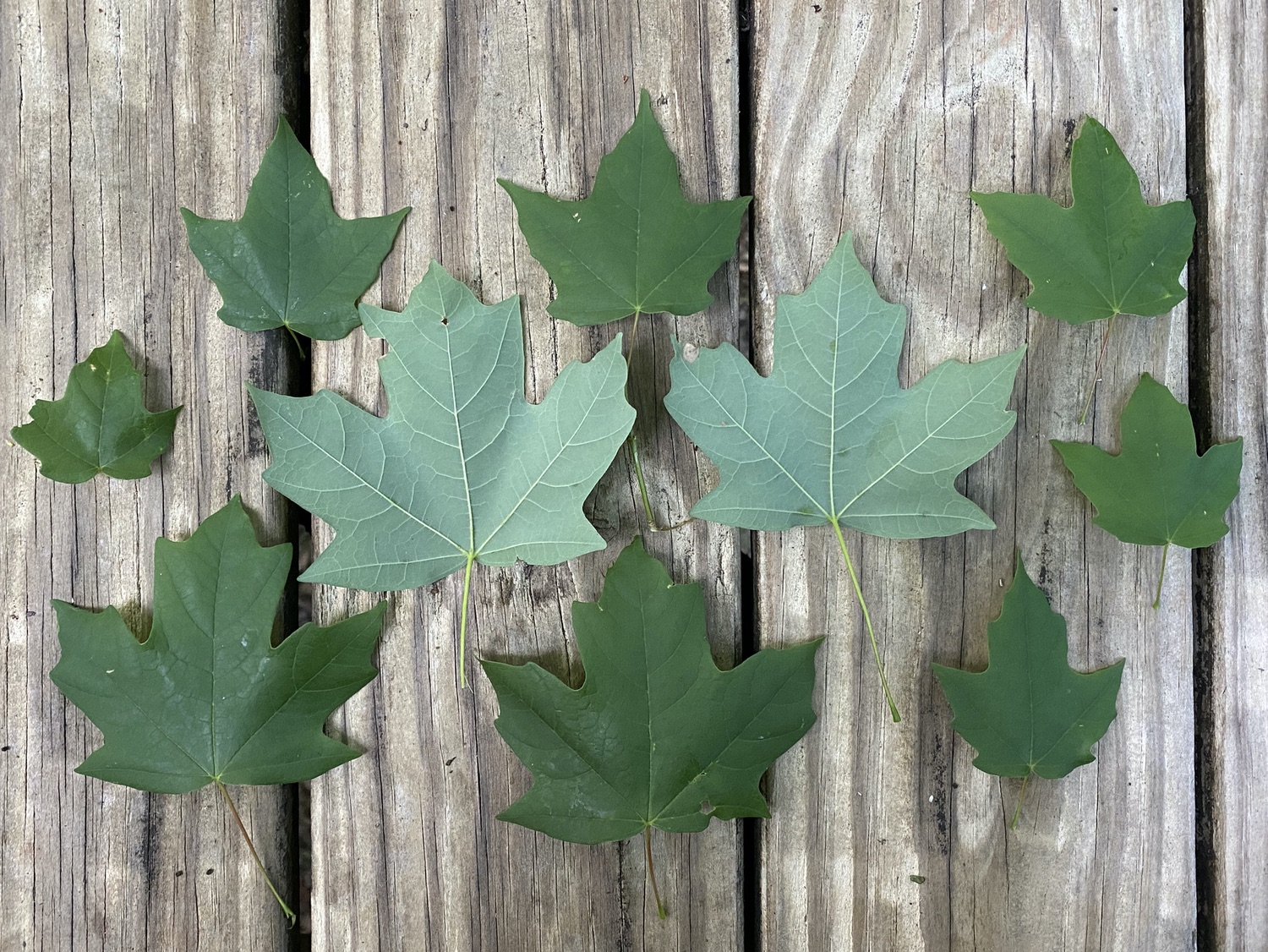
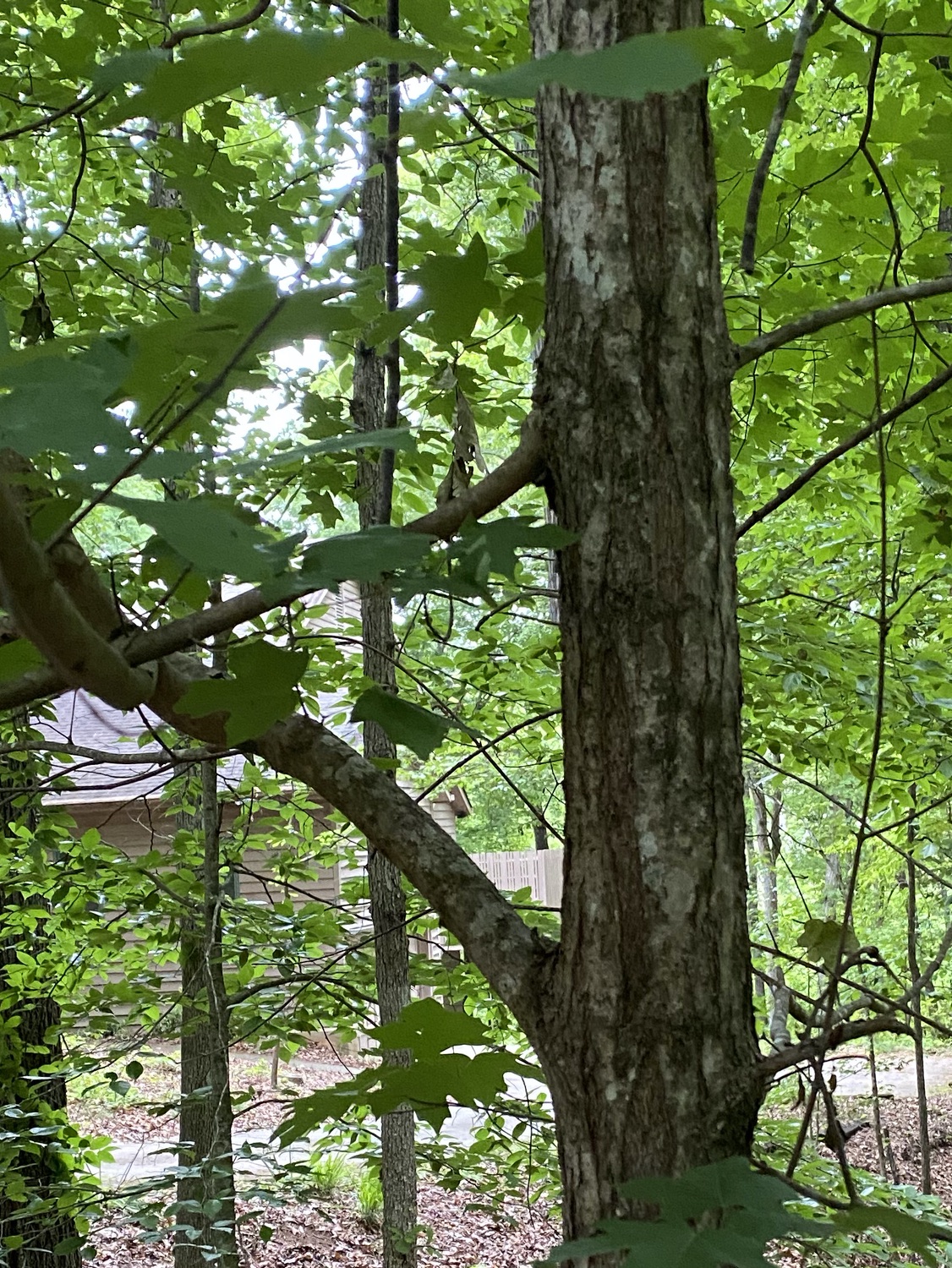
Chalk Maple (Acer leucoderme). Leaves have classic maple shape, with 3–5 lobes, and are similar to those of the Florida Maple. Distinguished by the undersides of leaves being yellowish green, by leaves generally having a tapering terminal lobe, and by some leaves having very long tips. Bark is smooth.
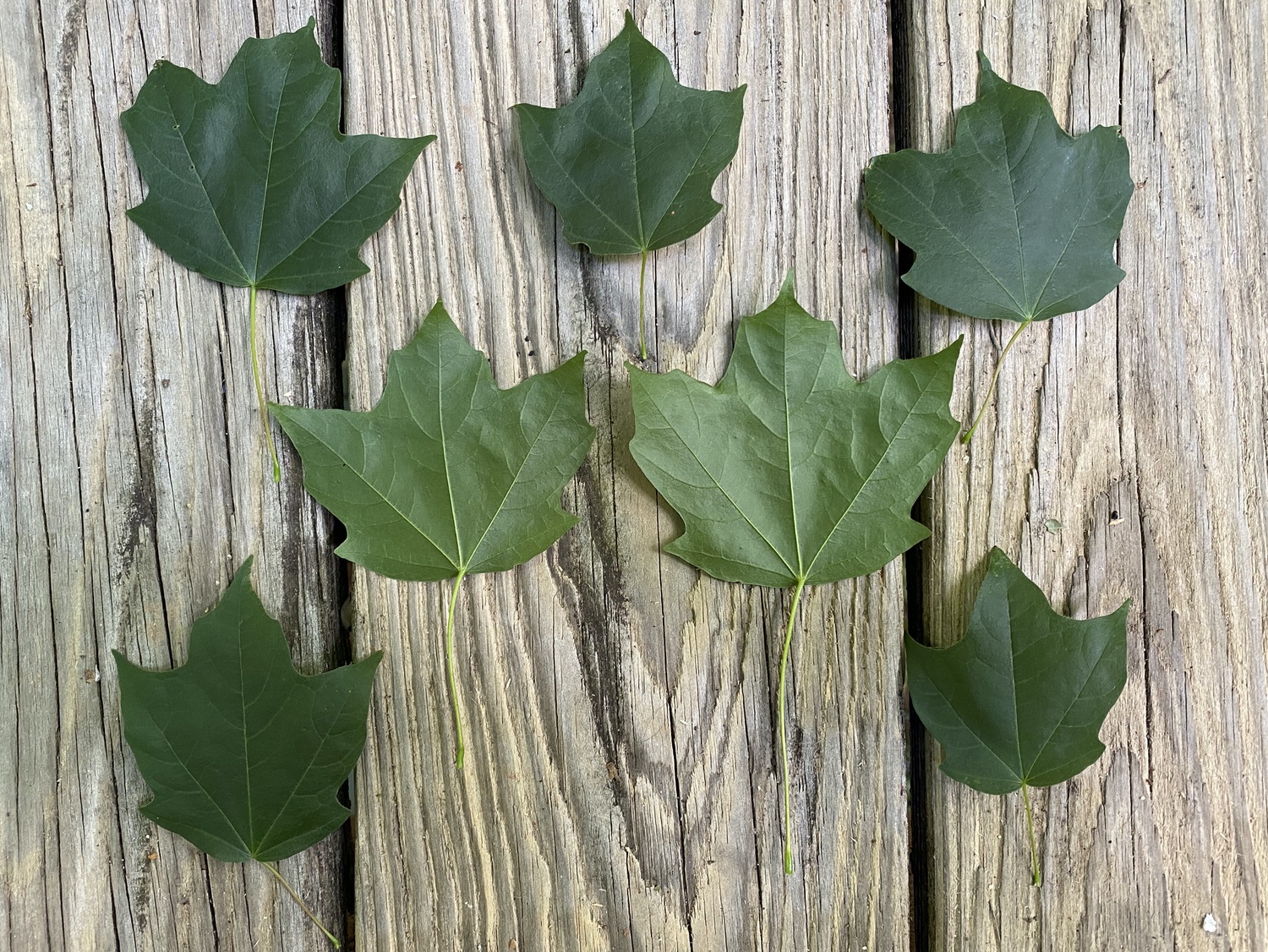
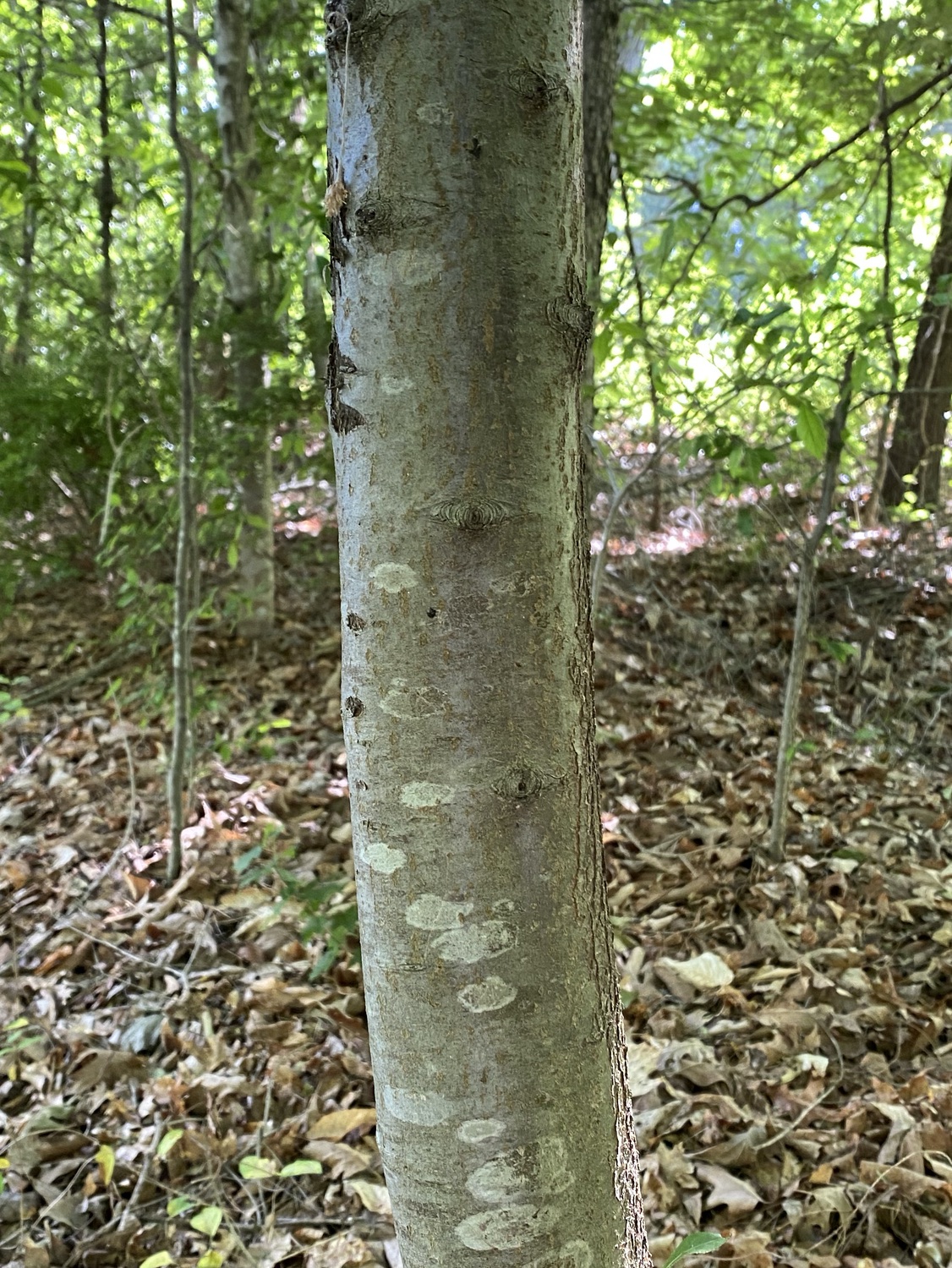
Boxelder (Acer negundo). The leaves typically have three leaflets, reminiscent of Poison Ivy, but differ in that the leaves are alternate. Some branches tend to have leaves with five leaflets, especially at the tips of actively growing branches, and sometimes there is a single three-lobed leaf. The brown bark consists of interlacing ridges. The seeds are paired and winged, as is typical for a maple. Boxelder is a common tree near the river.
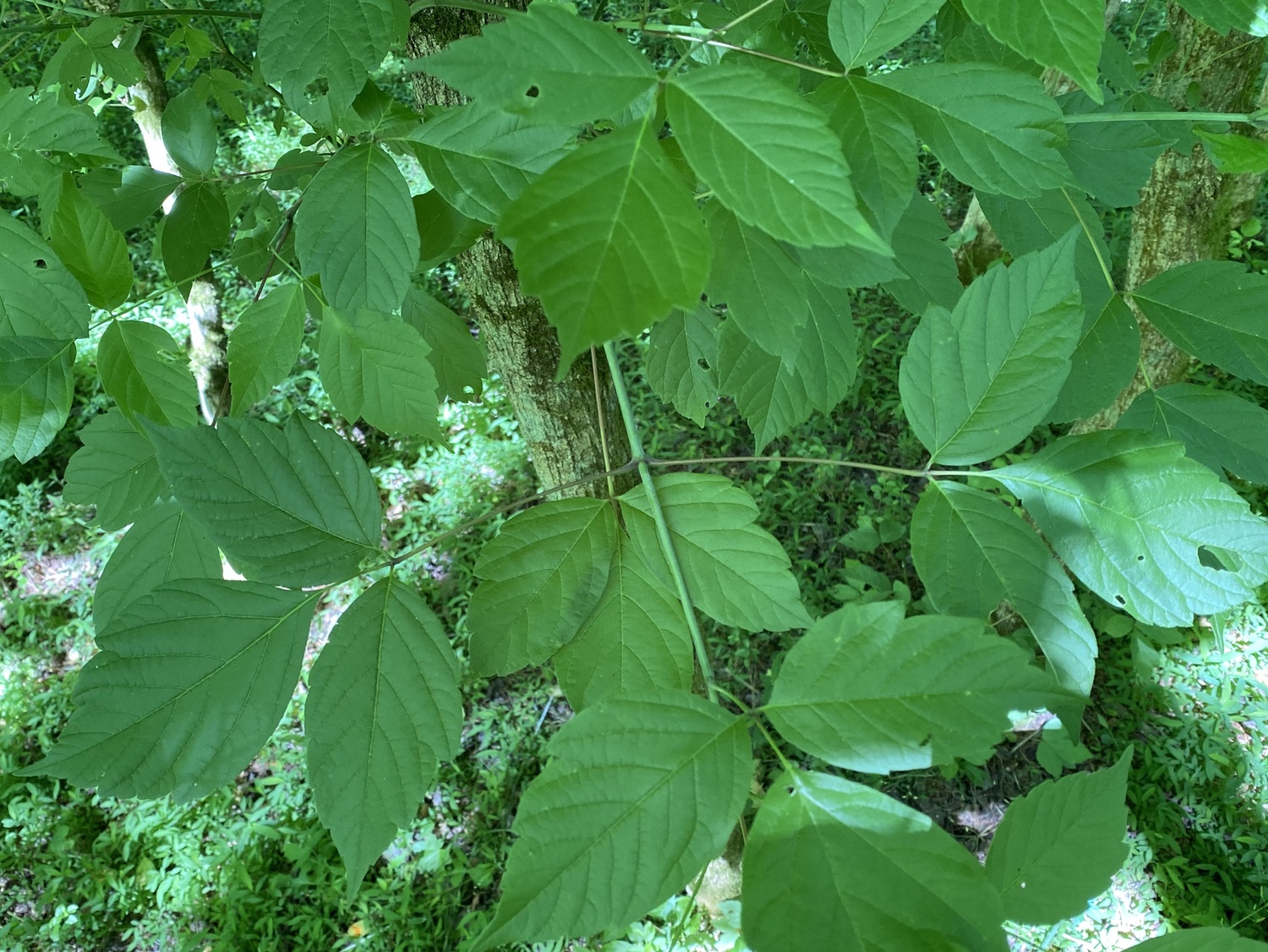
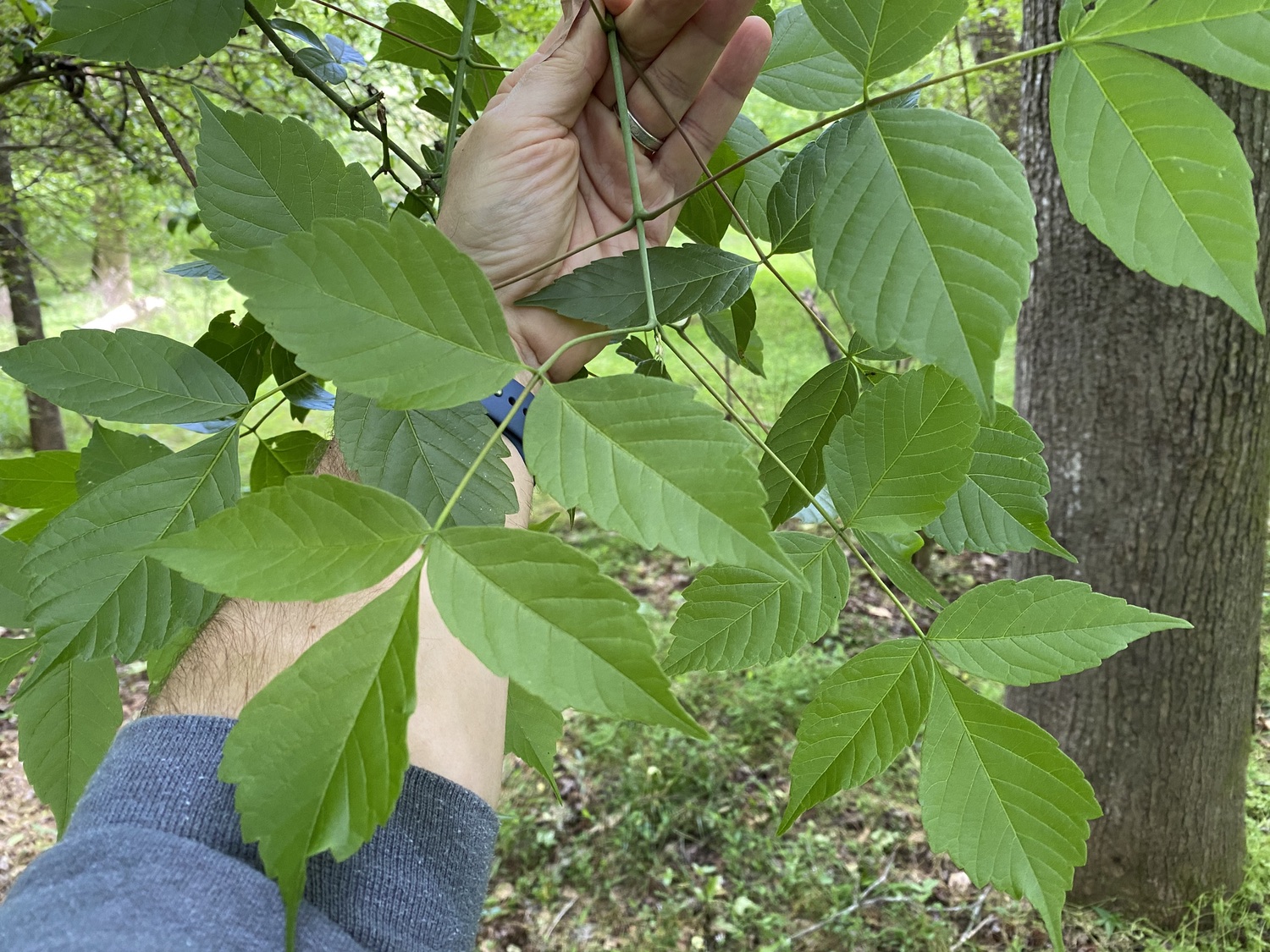
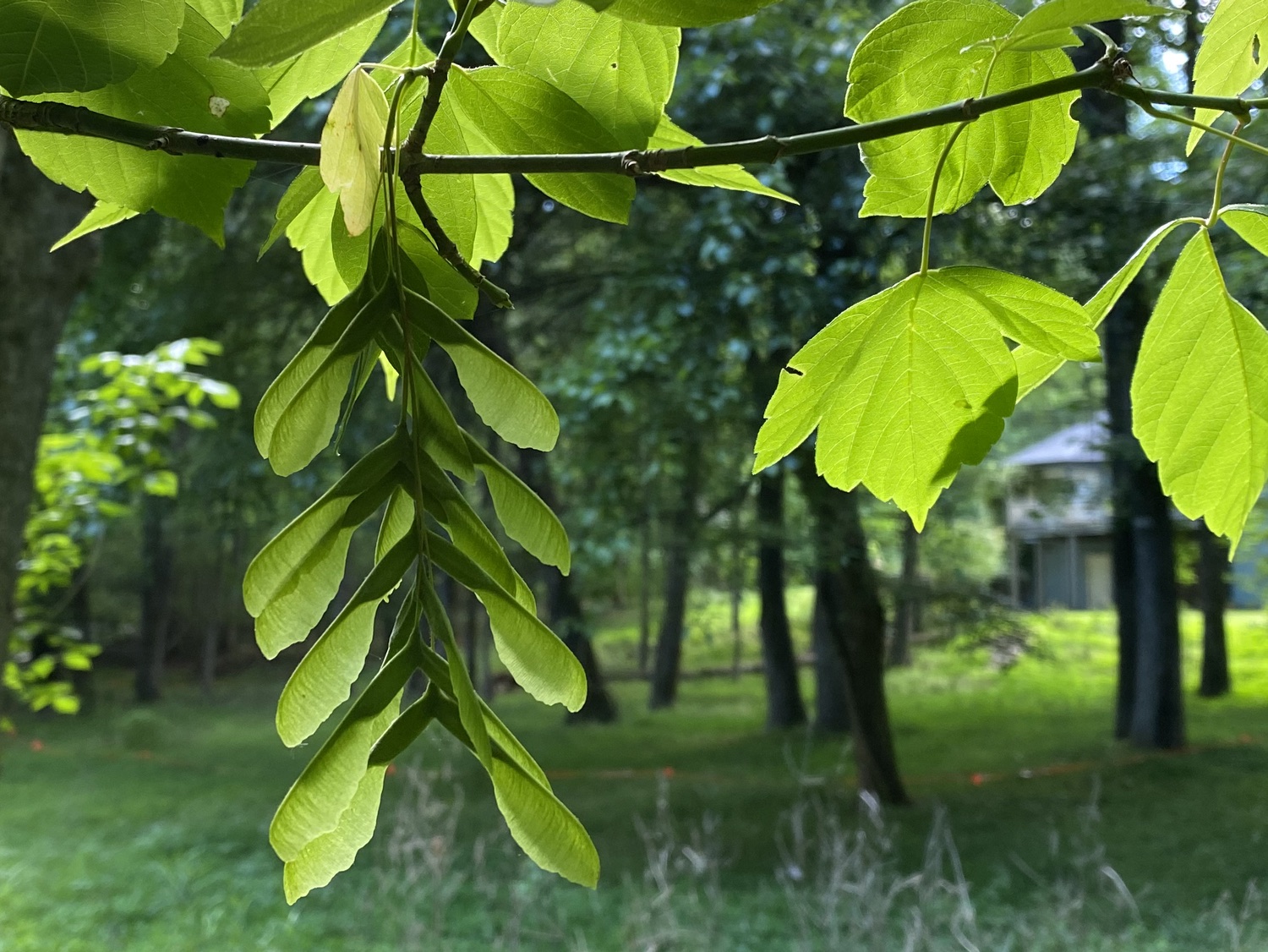
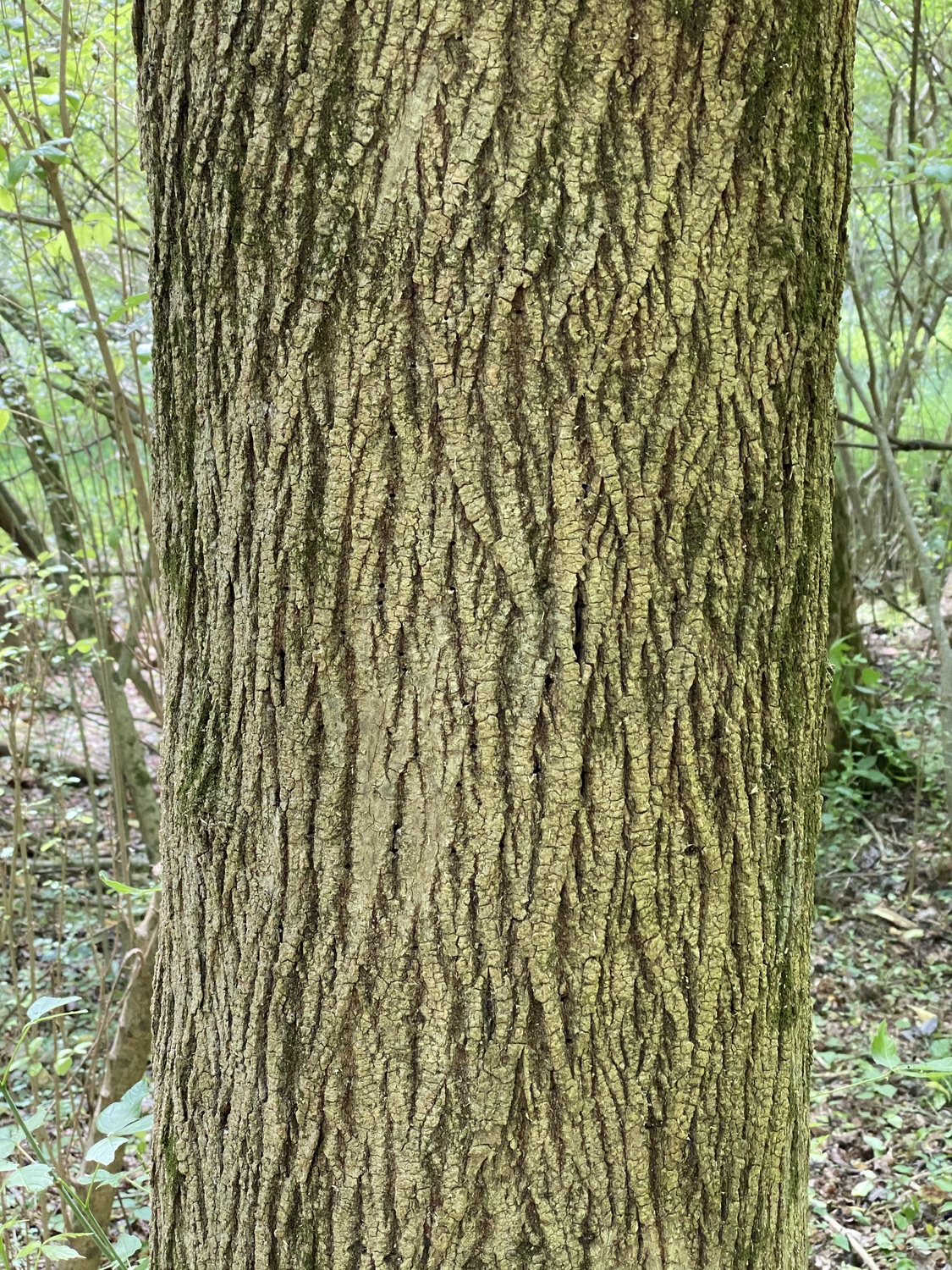
Sweetgum (Liquidambar styraciflua). Sweetgum leaves have five pointed lobes, although uncommonly, some leaves have four, six, or seven lobes. The trees shed numerous spiky seed balls and frequently drop dead branches. The bark is coarsely ridged, similar to one of the red oaks, but not as linearly furrowed as the red oaks.
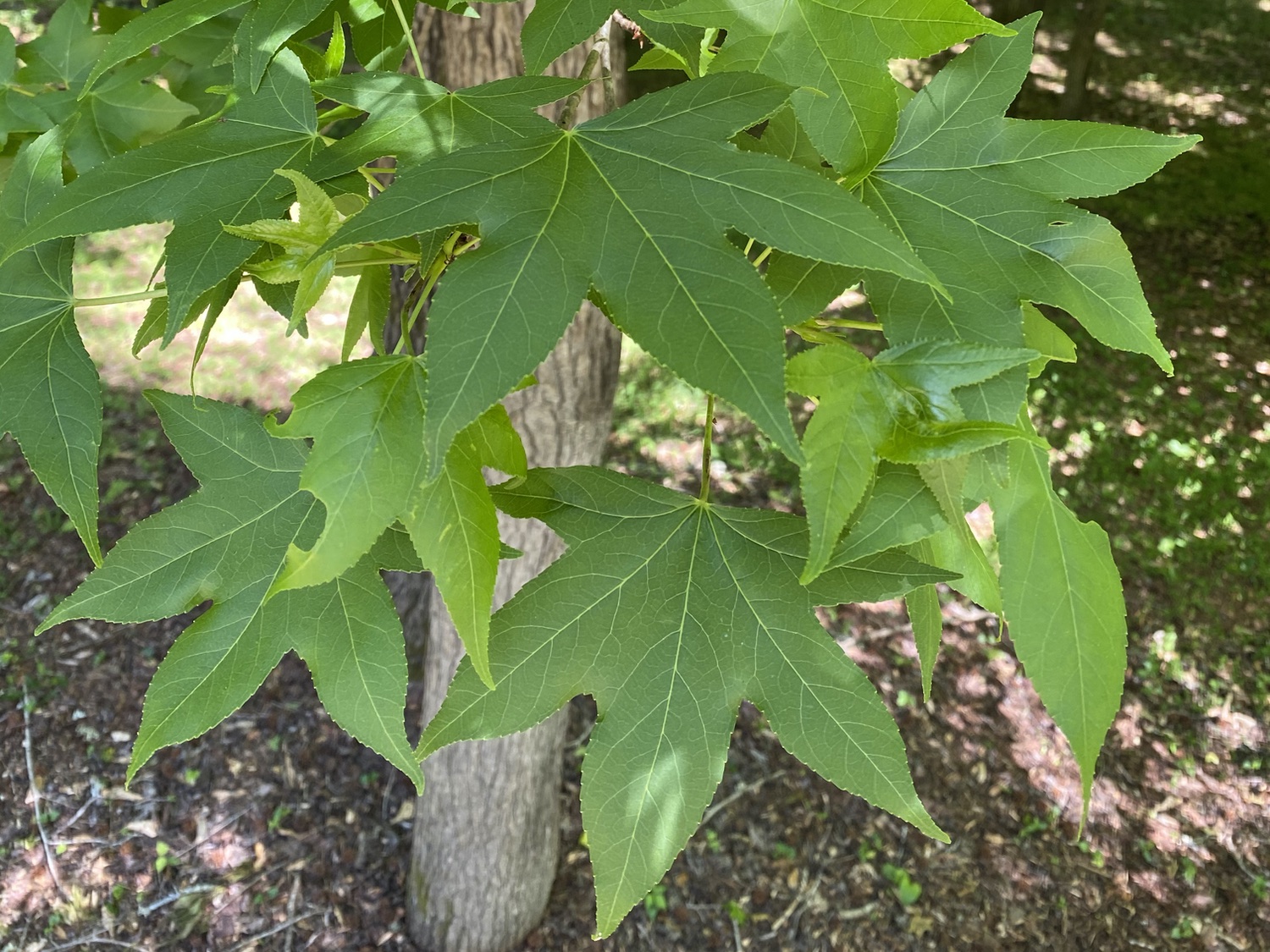
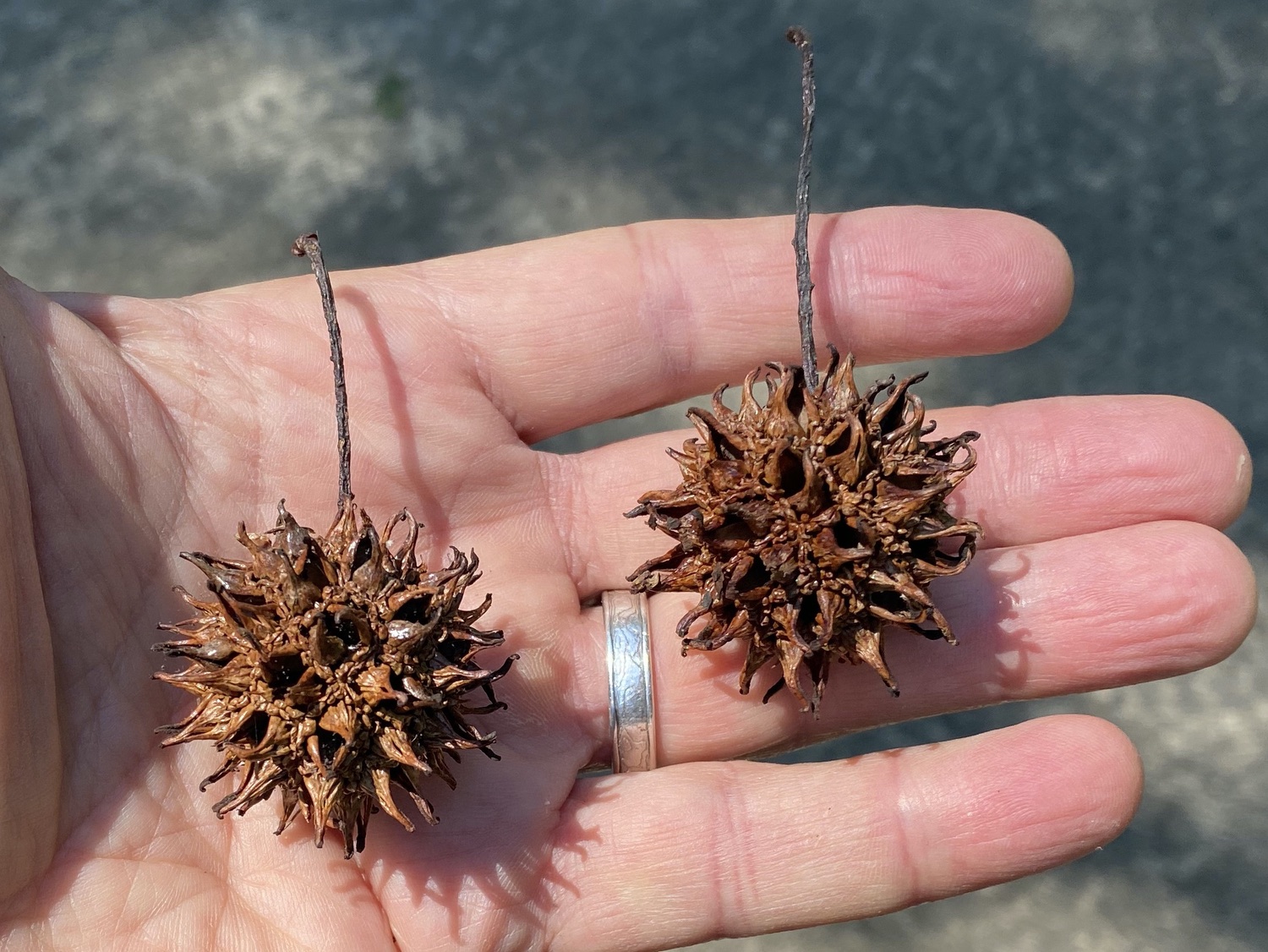
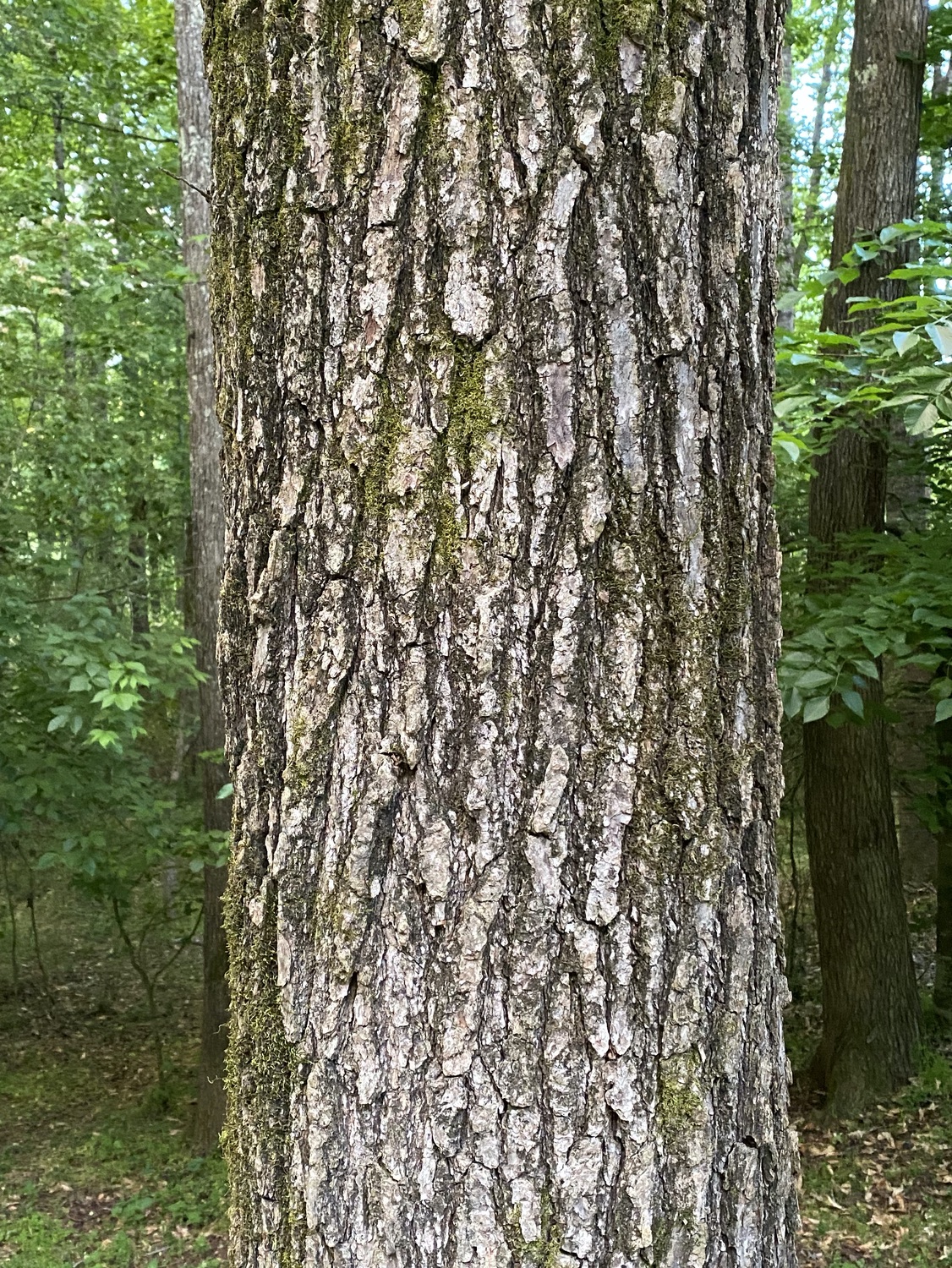
American Sycamore (Platanus occidentalis). American Sycamore nearly always grows adjacent to the river. That and its height make getting close to the leaves difficult. Even so, they are distinctive, reminiscent of maple leaves but are pale yellowish-green, larger, less lobed, and have many teeth. They bear 1" green spherical fruit balls. The bark of the trees can be rough near the ground, but most of the bark is smooth light gray with rounded peeling patches of tan.
The American Sycamore is another tree that is far more common near the river than in dryer upland areas. It is common in association with Water Oak, American Sycamore, Green Ash, River Birch, American Hornbeam, and American Basswood.
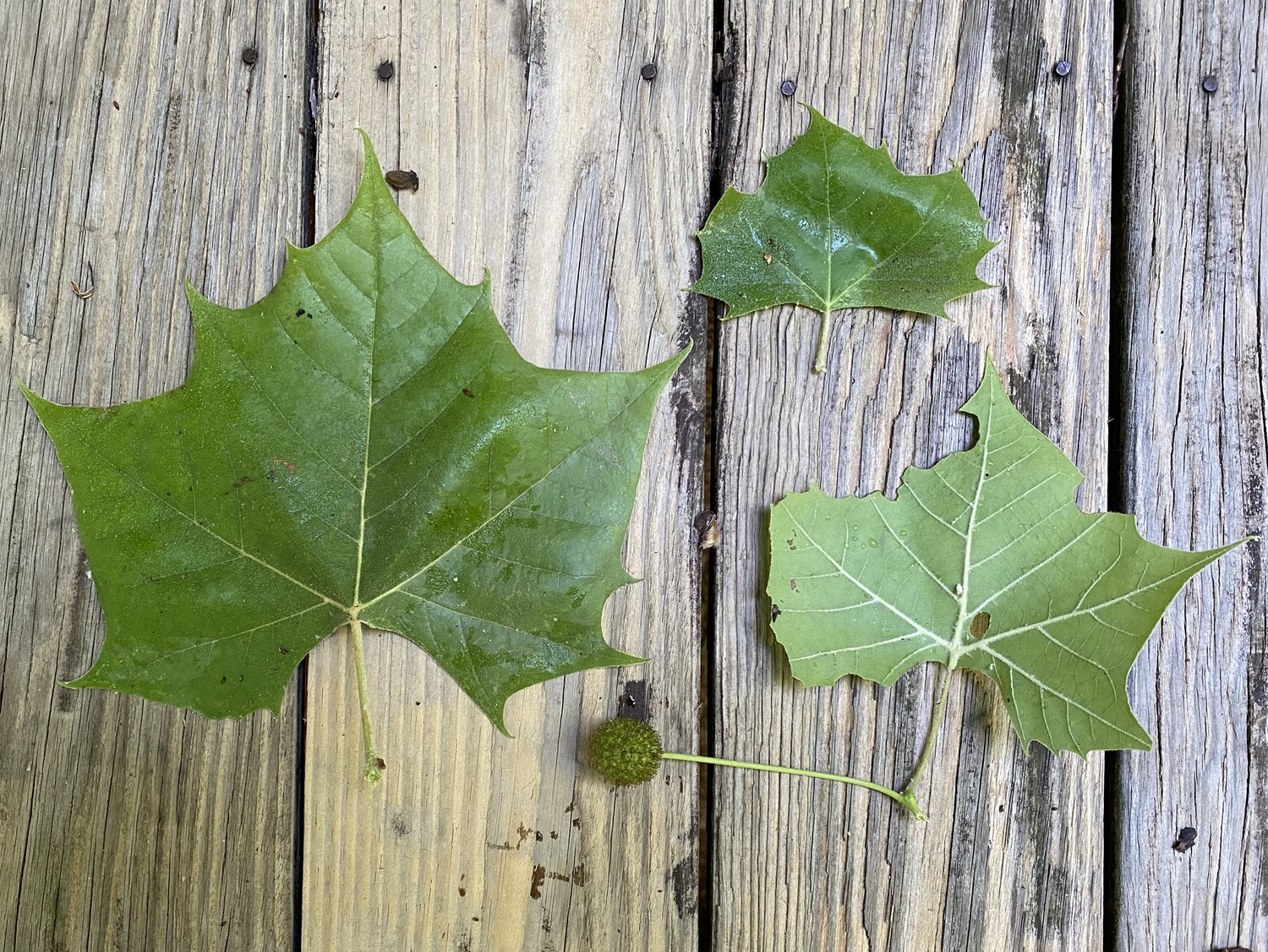

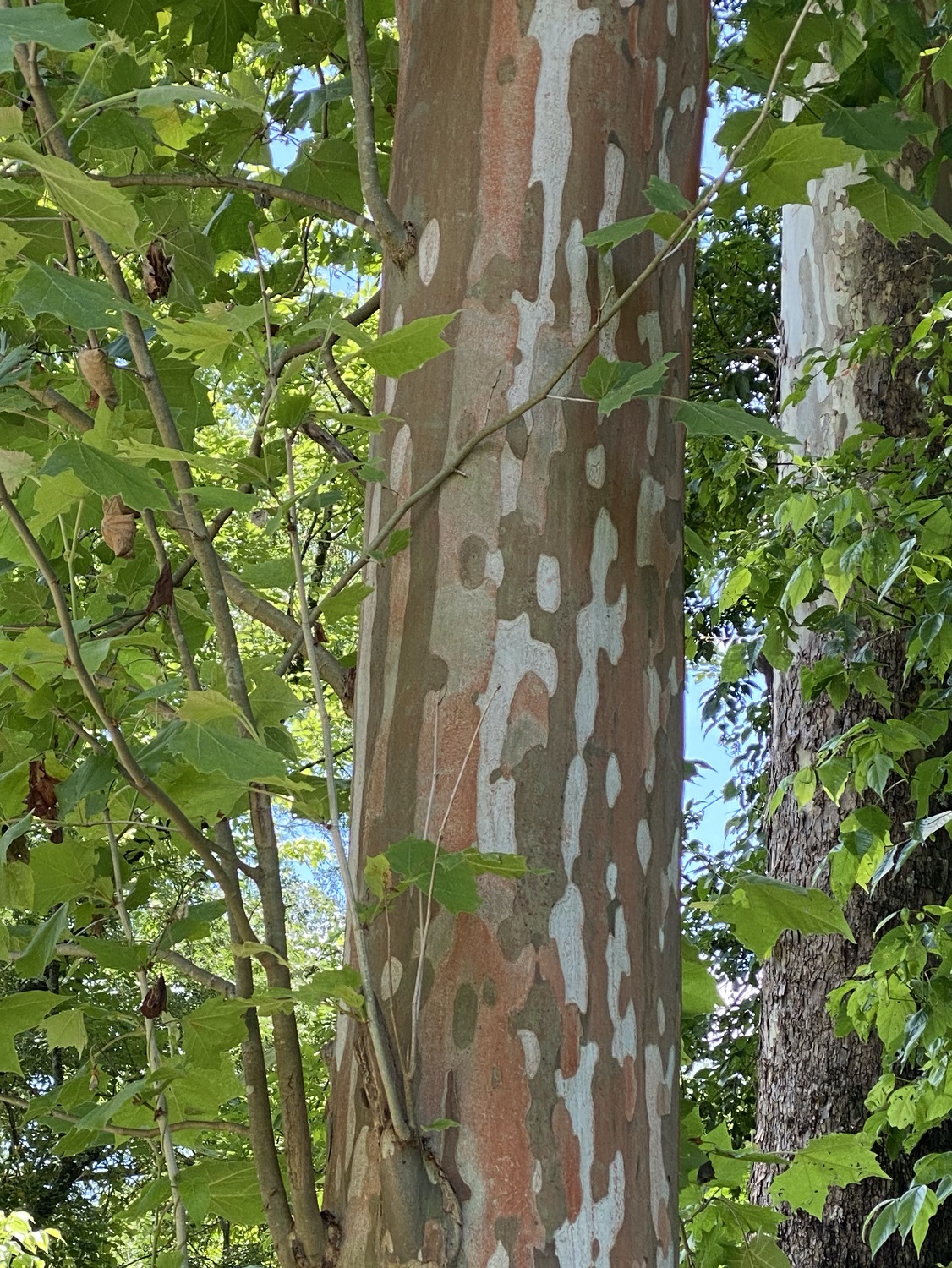
Tuliptree (Liriodendron tulipifera). Tuliptrees have a distinctive leaf with four pointed lobes. In April and May, they bear large tulip-like flowers, although these are often high in the canopy. The trunks are typically quite straight and branch-free until high above the ground. The bark is relatively smooth, with narrow vertical light and dark stripes.
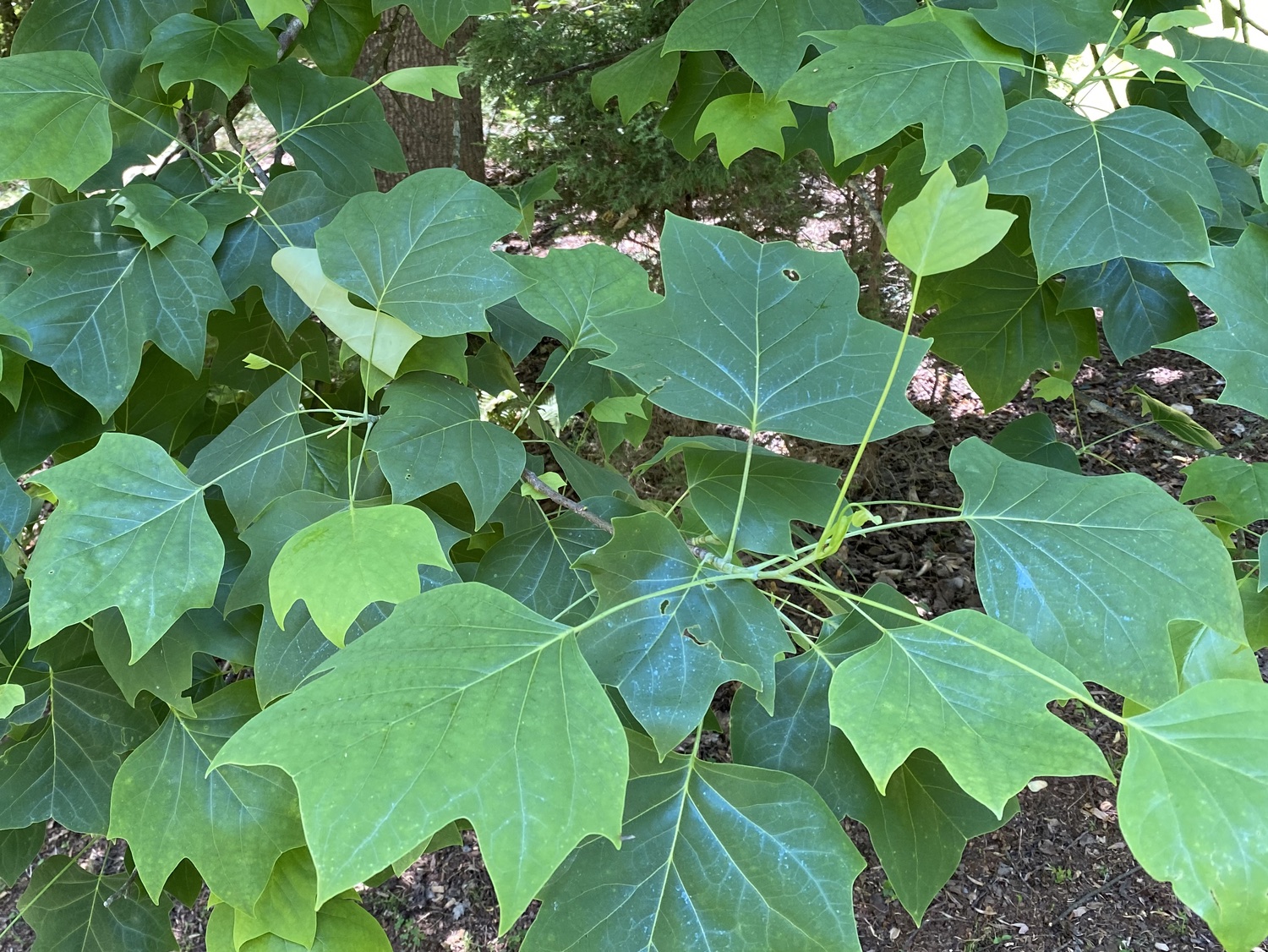
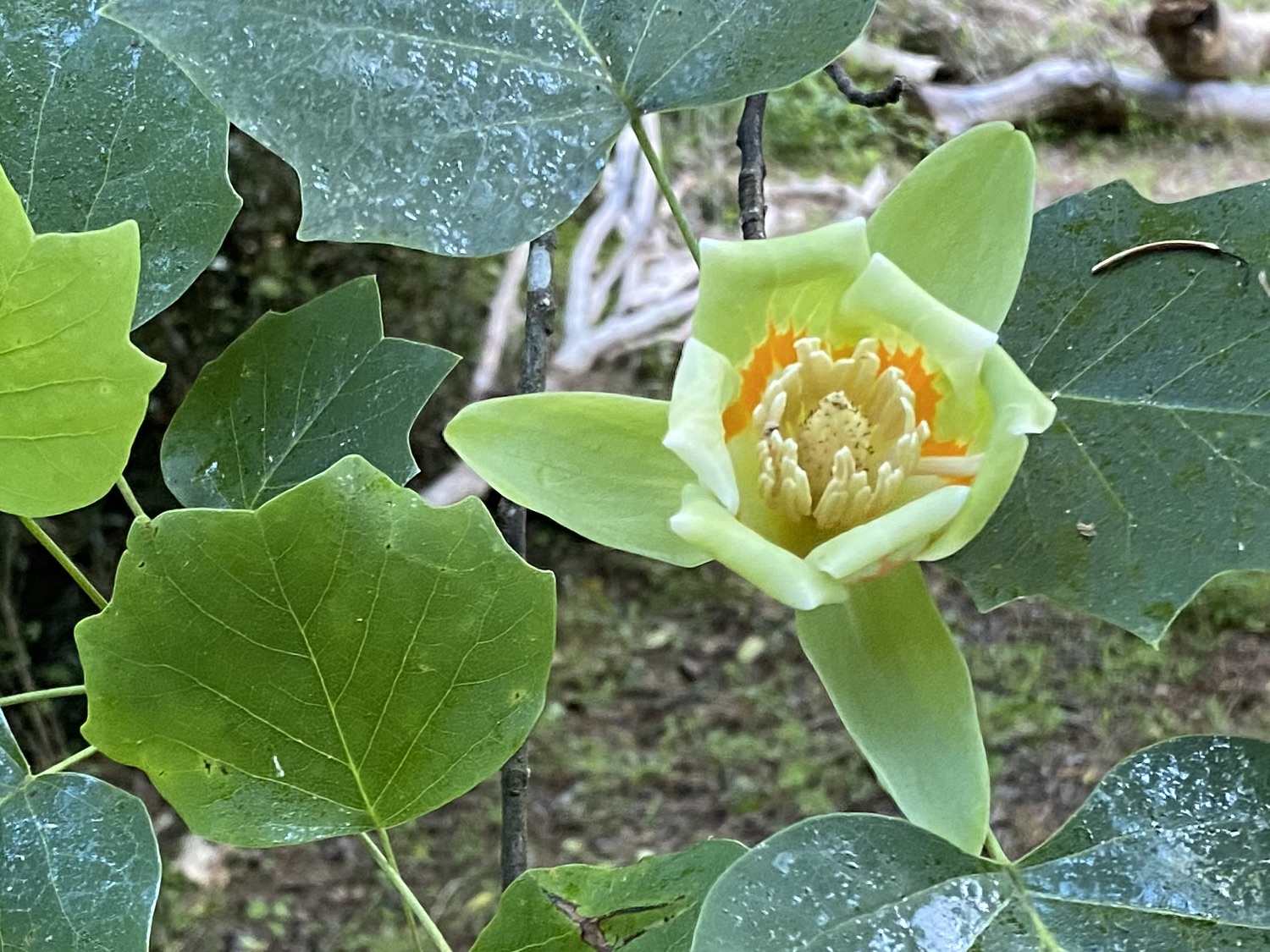

Sassafras (Sassafras albidum). The leaves of Sassafras are unmistakable, consisting of three symmetrical lobes or less commonly, a mitten-shaped leaf with a single side lobe. I have not seen large Sassafras trees yet; they’ve all been saplings.
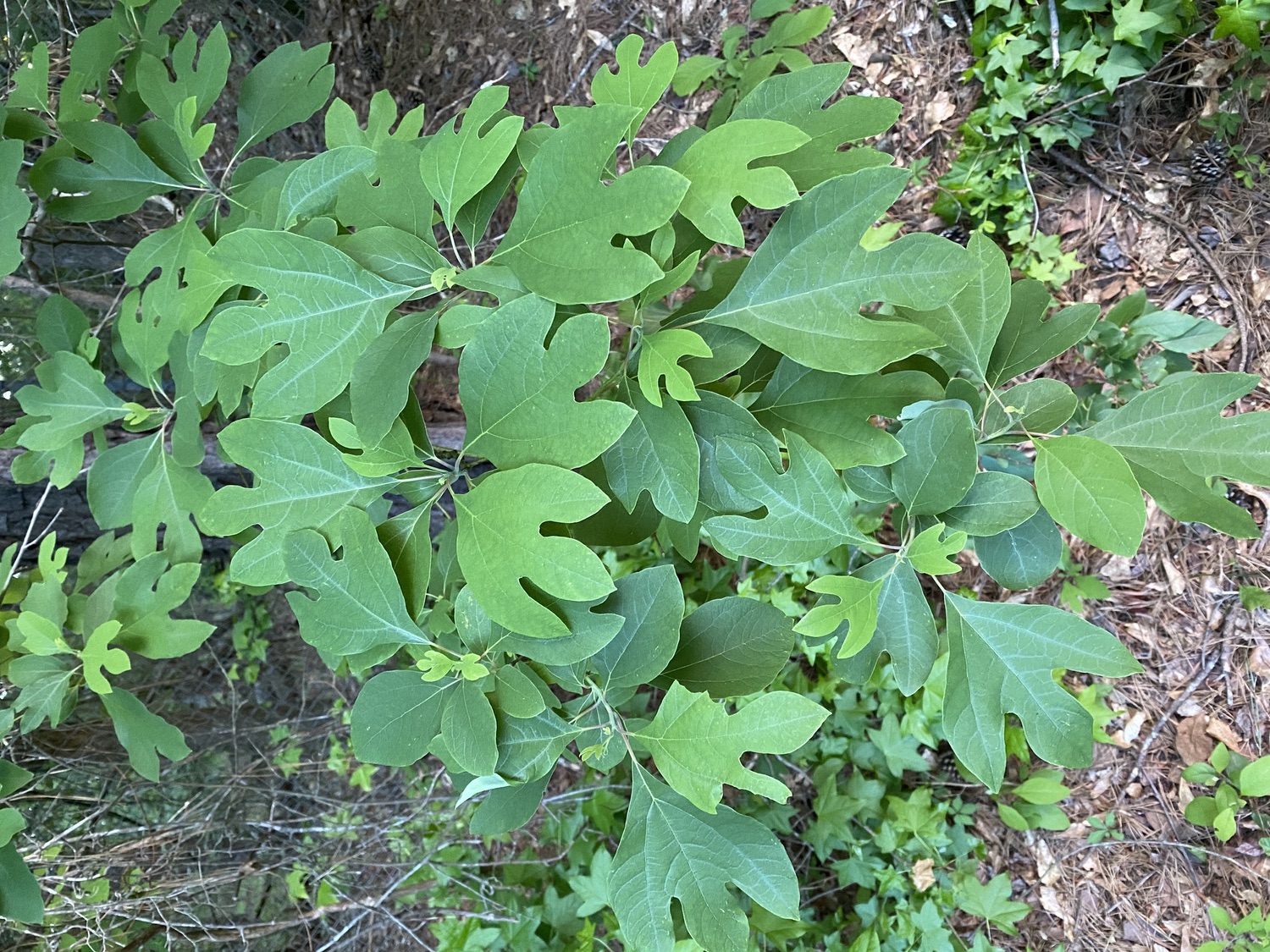
Eastern Redbud (Cercis canadensis). Eastern Redbud has heart-shaped leaves, with pink–purple flowers in the spring that produce brown and flattened bean-shaped pods. The bark, especially of young trees, has orange furrows.
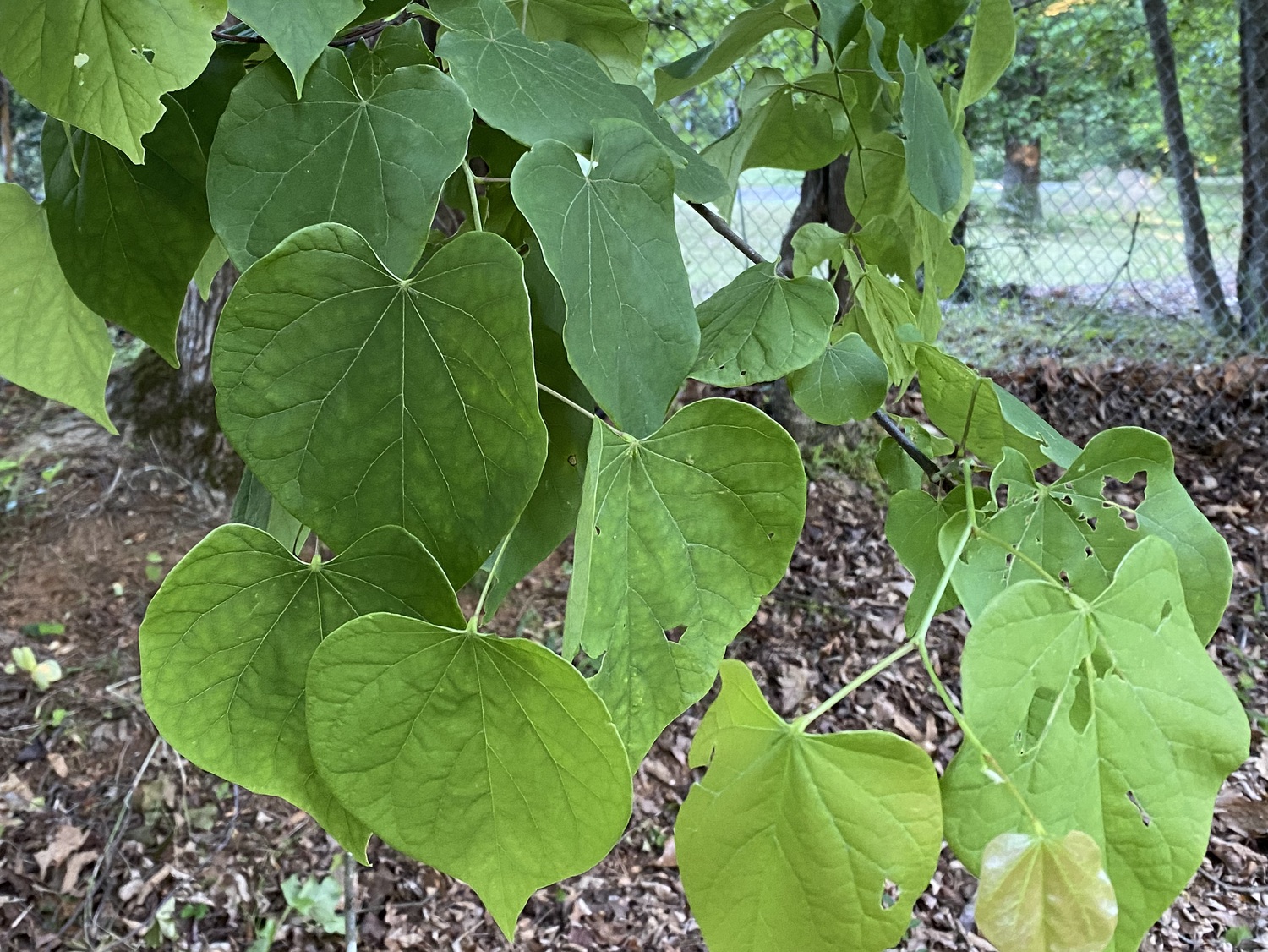

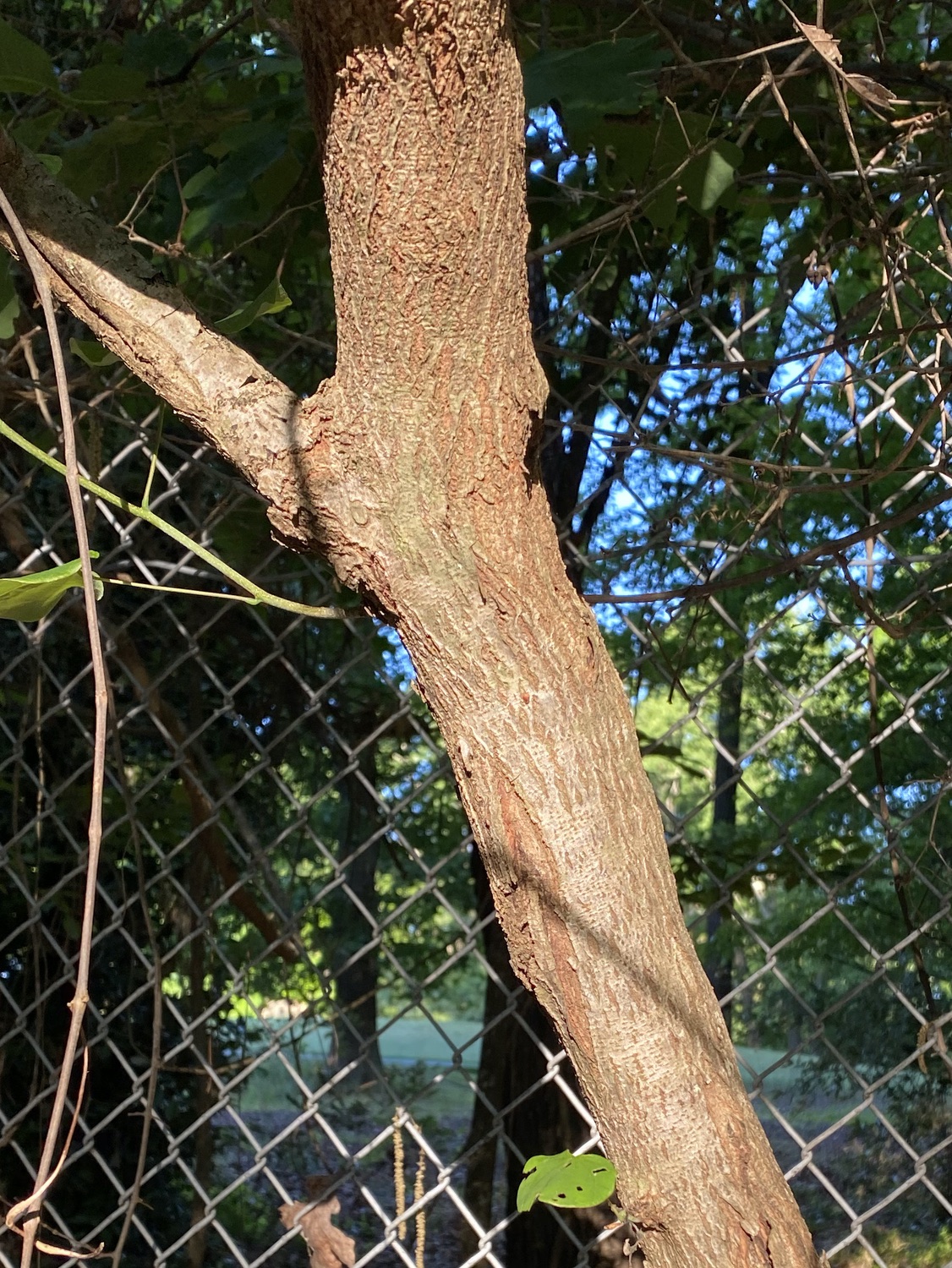
Southern Catalpa (Catalpa bignonioides). The Southern Catalpa has large (to 7"), light yellow-green, heart-shaped leaves, some with short points. In May, it has clusters of white, trumpet-shaped flowers with purplish centers. The bark is scaly.
I had not found these for a long time, and then I discovered them along the banks of the North Oconee River, a typical habitat for them. Even there, they are sparse, with perhaps 7 trees in about 1¼ miles. Many of the trees have large dead spots or are nearly entirely dead with new growth starting from the base.
The Northern Catalpa also occurs in the area, although I’ve not yet seen one. Its flowers are larger than those of the Southern Catalpa (4–6 cm wide vs. 2–4 cm wide). It is also apparently difficult to tell the leaves of the two apart (see the Carolina Nature website).
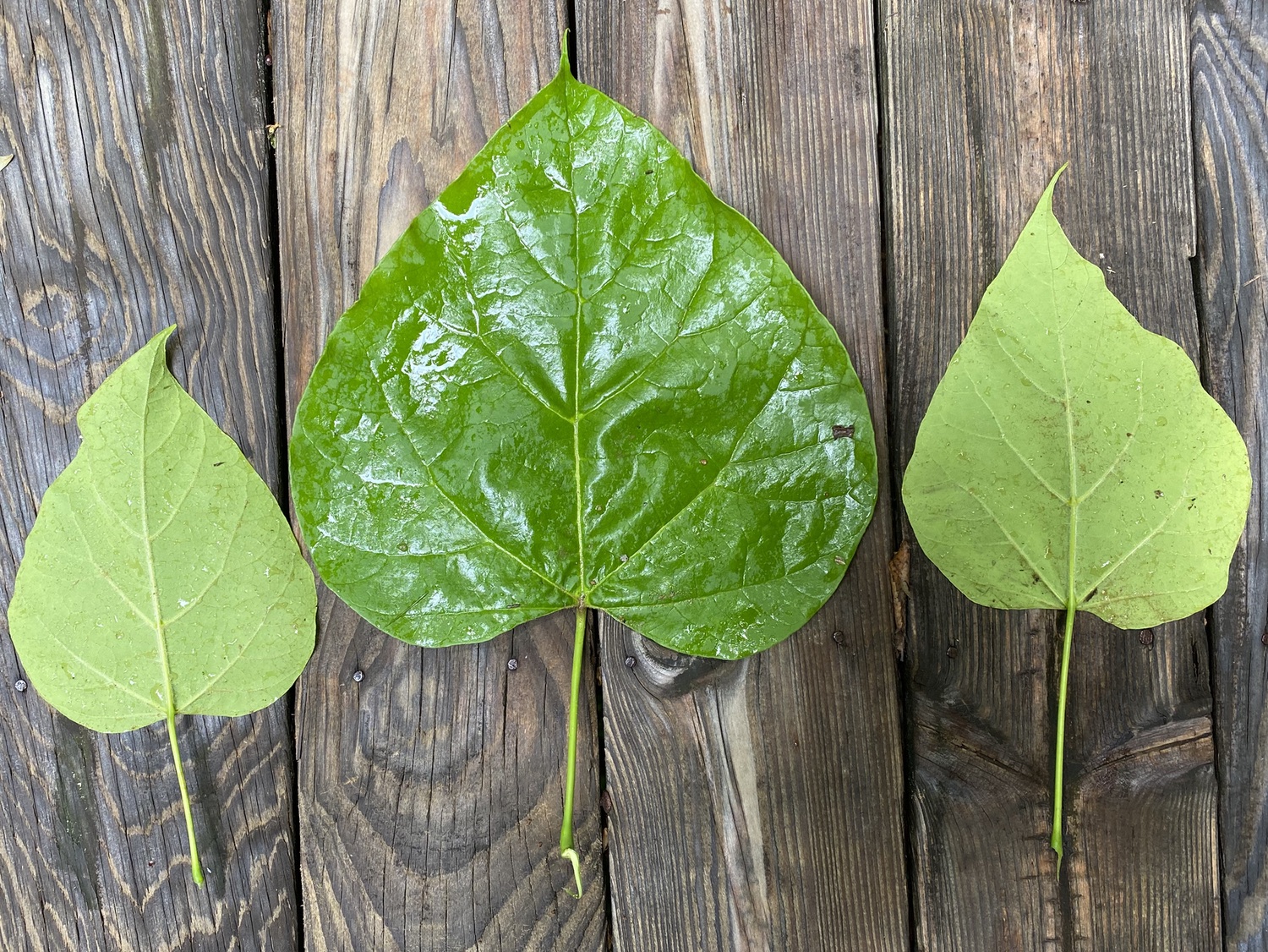
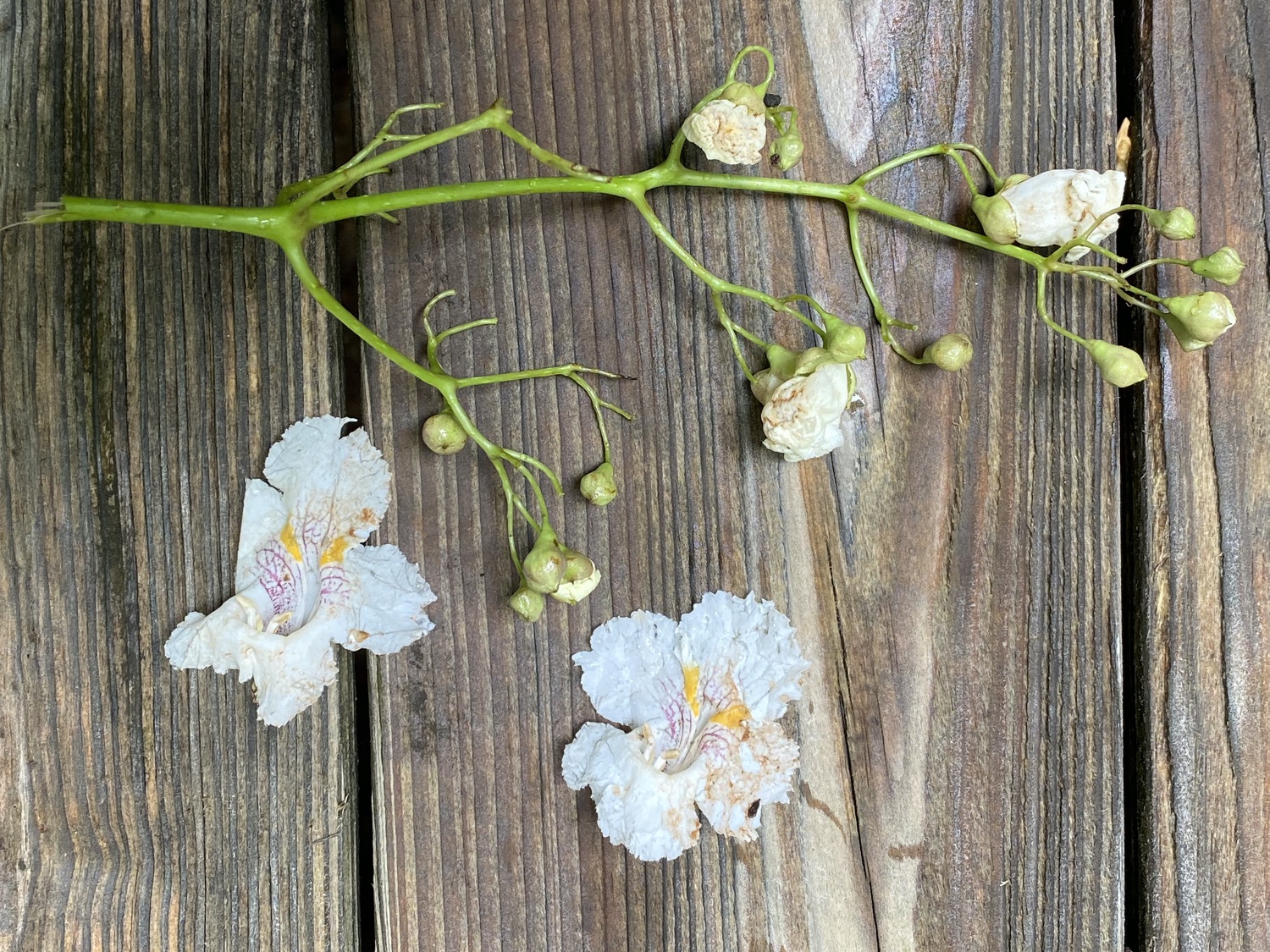
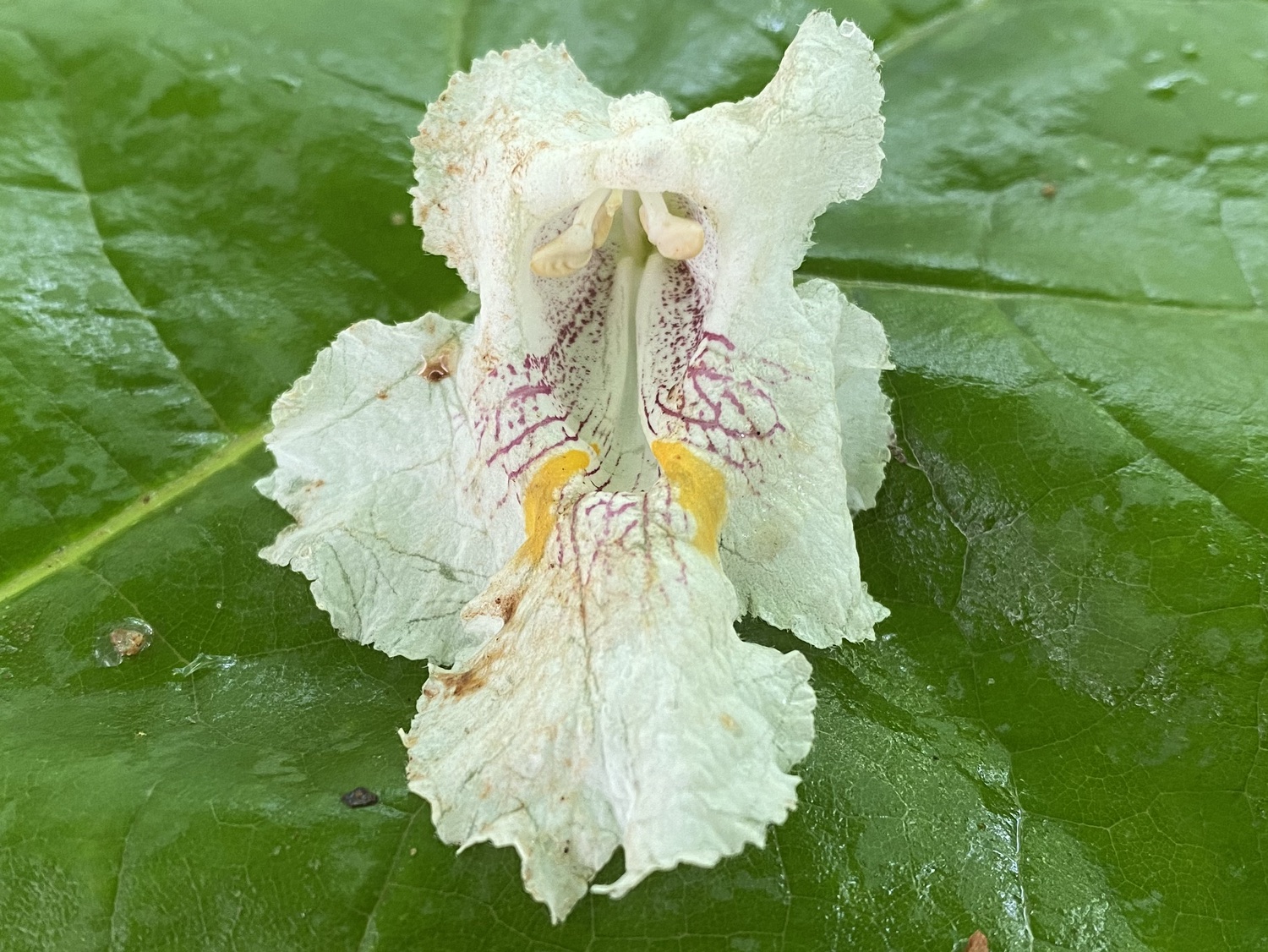
Royal Paulownia (Paulownia tomentosa, also called Princesstree). The Royal Paulownia is native to east Asia, but it is now naturalized in the southeastern United States. The leaves are large (up to 9"), heart-shaped, with a long point. April brings clusters of large pale purple flowers, and clusters of pointed round seedpods remain on the tips of the branches long afterwards. The bark is ridged with alternating rough and smooth patches; young trees and small branches are smooth with rough lenticels.
